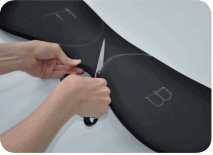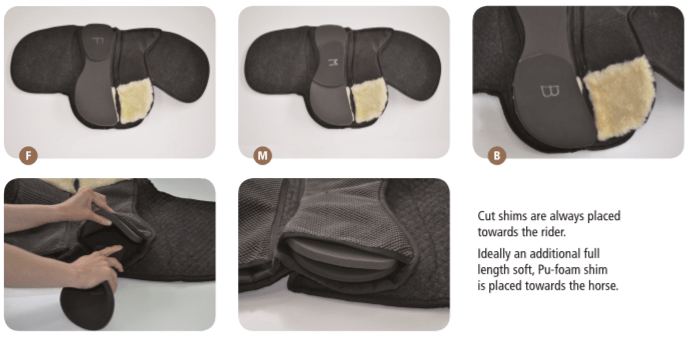A saddle should always sit level on the horse‘s back.
- First, it should sit horizontally level so that the pommel and the cantle are at the same height,
- Second, the girth straps should run vertically level so that the saddle rides further forward on your horses back, like a Barefoot saddle should.
If you place the saddle in the correct position on a horse’s back and yet the pommel and the cantle are not level, you can adjust this by adding fillings to the saddle pad. Here’s how you do it.
First you need to decide if you need the extra filling in the front, in the middle or in the back.
You should add a filling to the front when:
- The saddle is dipping forward,
- The saddle “rides up the neck”,
- The rider feels (s)he is being tipped forward,
- The horse is croup-high.
You should add a filling to the middle when:
- The horse has a pronounced sway back.
You should add a filling to the back when:
- The saddle slips back,
- The rider feels (s)he is being tipped backwards,
- The horse has loaded shoulders,
- The horse has a very long back.
When you have decided where you need to add the extra filling, you need to cut out the appropriate piece with scissors. You should cut cut at a 45-degree angle because that will make the transition smoother for your horse, from a filled area to an area with no extra filling.

Our saddle pad “Special” comes with polyurethane foam fillings. Our saddle pad “Physio” comes with polyurethane foam and rubber fillings.
The most common way of adjusting the saddle pad is to cut rubber fillings into two or three pieces and place them into the saddle pad on top of the softer polyurethane fillings, which should cover the whole length of the saddle pad.

This is what it looks like in practise:

That’s it for now! Back to Know-How central
